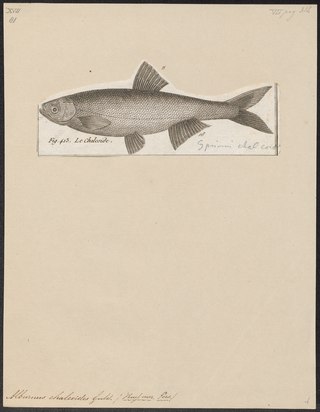
The little crow is an Australian species of crow, very similar to the Torresian crow in having white bases to the neck and head feathers but slightly smaller and with a slightly smaller bill. It has the same white iris that distinguish the Australian species from all other Corvus except a few island species to the north of Australia, and one from Eurasia, the jackdaw. Like the Australian raven, this species has a blue ring around the pupil.

The Phasmatodea are an order of insects whose members are variously known as stick insects, stick-bugs, walkingsticks, stick animals, or bug sticks. They are also occasionally referred to as Devil's darning needles, although this name is shared by both dragonflies and crane flies. They can be generally referred to as phasmatodeans, phasmids, or ghost insects, with phasmids in the family Phylliidae called leaf insects, leaf-bugs, walking leaves, or bug leaves. The group's name is derived from the Ancient Greek φάσμα phasma, meaning an apparition or phantom, referring to their resemblance to vegetation while in fact being animals. Their natural camouflage makes them difficult for predators to detect; still, many species have one of several secondary lines of defense in the form of startle displays, spines or toxic secretions. Stick insects from the genera Phryganistria, Ctenomorpha, and Phobaeticus include the world's longest insects.
Stenolepis is a genus of lizard in the family Gymnophthalmidae, a family commonly known as microteiids or spectacled lizards. The genus Stenolepis contains a single species, Stenolepis ridleyi, commonly known as the Pernambuco teiid. The species is endemic to Brazil, and the common name refers to its type locality in Pernambuco state in northeast Brazil.

The white-billed buffalo weaver is a resident breeding bird species in most of Africa south of the Sahara Desert.

Extatosoma tiaratum, commonly known as the spiny leaf insect, the giant prickly stick insect, Macleay's spectre, or the Australian walking stick, is a large species of Australian stick insect. The species has the Phasmid Study Group number PSG9.

Ridley's bat is a species of vesper bat. It is found in Indonesia and Malaysia.

The Danube bleak or Caspian shemaya is a species of freshwater fish in the family Cyprinidae. It is found in Iran, Ukraine, Georgia, Armenia, Slovakia, Moldova, Greece, Czechia, Azerbaijan, Turkiye, Afghanistan, Austria, Bosnia and Herzegovina, Bulgaria, Croatia, Switzerland, Germany, Hungary, Italy, Romania, Russia, Serbia, Slovenia, Turkmenistan, and Uzbekistan.
Podocarpus ridleyi is a species of conifer in the family Podocarpaceae. It is found only in Peninsular Malaysia.

The Malayan tailless leaf-nosed bat is a species of bat in the family Hipposideridae. It is a very small bat which has long and soft fur. The fur coloration is brown to blackish on the dorsal surface and ashy on the ventral surface. It can be distinguished from the other roundleaf bats by its small size and the absence of the tail. It is listed as vulnerable by the IUCN

Ridley's leaf-nosed bat, Ridley's roundleaf bat, or Singapore roundleaf horseshoe bat is a species of bat in the family Hipposideridae. It is found in Brunei, Malaysia and Singapore. Its natural habitat is subtropical or tropical swamps. It is threatened by habitat loss.
Alseodaphne ridleyi is a species of plant in the family Lauraceae. It is a tree endemic to Peninsular Malaysia.
Syzygium ridleyi is a species of plant in the family Myrtaceae. It is found in Malaysia, Singapore, and Thailand.
Madhuca ridleyi is a species of plant in the family Sapotaceae. It is a tree endemic to Peninsular Malaysia. It is threatened by habitat loss.

Peruphasma schultei, known as the black beauty stick insect and the golden-eyed stick insect, is a species of phasmid found in the Cordillera del Condor region of northern Peru. In the wild the insect feeds on Schinus plants, but will feed on privet, Aucuba japonica and honeysuckle in captivity. In Peru they are only known to exist in a region of less than 5 hectares, usually on volcanoes or mountains, but since their discovery they have become increasingly popular as pets worldwide due to their unusual colouration and they are now bred regularly in captivity.

Eurycnema goliath, commonly known as the goliath stick insect, or the regal stick insect, is a large species of stick insect in the family Phasmatidae, endemic to Australia and considered one of the largest species of stick insects in the country. The species has the Phasmid Study Group number PSG14.

Dryococelus australis, commonly known as the Lord Howe Island stick insect or tree lobster, is a species of stick insect that lives on the Lord Howe Island Group. It is the only member of the monotypic genus Dryococelus. Thought to be extinct by 1920, it was rediscovered in 2001. It is extirpated in its largest former habitat, Lord Howe Island, and has been called "the rarest insect in the world", as the rediscovered population consisted of 24 individuals living on the small islet of Ball's Pyramid.
Diospyros ridleyi is a tree in the family Ebenaceae. It grows up to 30 metres (100 ft) tall. Twigs are reddish brown when young. Inflorescences bear up to three flowers. The fruits are round to ovoid, up to 5 cm (2 in) in diameter. The tree is named for the English botanist Henry Nicholas Ridley. Habitat is mainly lowland mixed dipterocarp forests. D. ridleyi is found in India, Peninsular Malaysia and Borneo.
Presbistus is a genus of Asian stick insects in the tribe Aschiphasmatini, erected by William Forsell Kirby in 1896. Species currently have a known distribution in: India, Cambodia, Borneo, Java and Sumatra.











